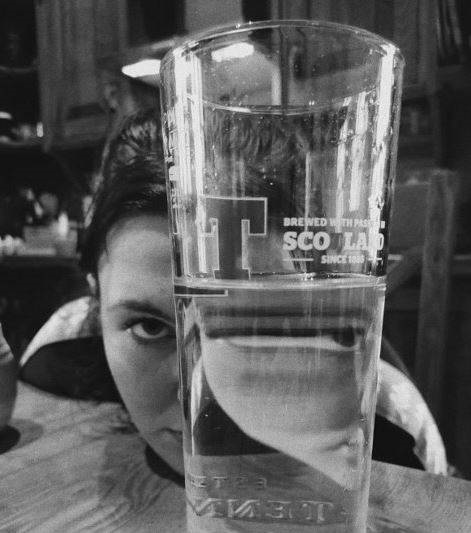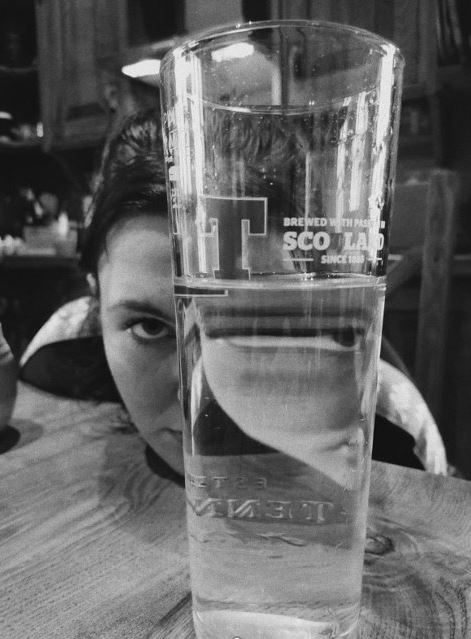STEM Photography Adult Competition
Please take a moment to scroll through the top-entries of our Adult Category of the STEM Photography Competition 2021:

This is Messier 27, or the Dumbbell Nebula, and is a planetary nebula about 1400 light years away from Earth.
Click 'read more' for original image.
This type of astronomical object is formed when a red giant star comes to the end of its life and ejects the ionised gas of its atmosphere out into space, leaving behind a small, dense white dwarf star at its centre. Energetic radiation from this excites the gas and causes it to emit light, which forms the colours seen in the image. This process of ejecting material at the end of a star’s life is incredibly important as it allows heavier elements such as carbon, nitrogen and oxygen, which are formed through nuclear fusion inside the star during its life, to be expelled into space.
New generations of stars can form from the expelled material, with potentially their own planetary systems, and these elements are essential for life to evolve. This image was captured using a 6-inch Schmidt-Cassegrain telescope with a focal reducer to give F6.3, and a cooled astronomical camera. The imaging setup was mounted on an equatorial mount which allowed the object to be kept stationary in the field of view for taking longer exposure images. The cooling of the camera chip is very important for imaging deep sky objects as it significantly reduces thermal noise on the sensor, which if present can degrade the image quality. Several 1-minute exposures were then stacked, along with calibration frames, to produce the final image.


The ancient Egyptian god Horus was a sky deity and according to Egyptian texts, Horus's left eye was the Moon and his right eye the Sun.
Click 'read more' for original image.
In this photograph the elongated image of my friend's eye through the water reminds me of the Eye of Horus. So which eye is it - the Sun or the Moon?
At first you might think the eye in glass is the eye covered by the glass (her left eye). But look closer and see it is orientated in a way resembling the right part of her face (our left). What is going on?
The light travels from her left eye, through the glass of water, to the camera. Light can be described as a wave and the refraction of light describes how light changes direction and speed while passing through different media. Glass and air have larger refractive indices than air. The glass is thin so the light that travels through the top of the glass is not very distorted. However, the glass filled with water now acts as a thick lens of larger refractive index. Light travelling from air to a medium with higher refractive index will bend towards the surface normal. Due to the curvature of the glass, the normal for the left and right side of the glass are in different directions and the angle of incidence the light makes with the glass is different for light coming from different parts of the eye, along the horizontal direction. This causes rays from opposite sides of the eye to be refracted in opposite directions, resulting in the image being flipped in the horizontal direction. On leaving the glass the light bends away from the normal, magnifying and stretching the image until it reaches the camera lens.
Answer: The Moon (her left eye) !


Belfast has had a long tradition of pushing the boundaries of technologies and one area in which it has excelled is shipbuilding.
Click 'read more' for original image.
The legacy of past innovators lives long and the ingenuity or repurposing the existing heavy engineering equipment will serve future generations.
I like this image as it gives a momentary pause to reflect on the past whilst revealing a glimpse of the opportunities dawning in our industrial future.


As a photography enthusiast, this was my attempt at steel wool light painting.
Click 'read more' for original image.
The camera sensor captures the orange sparks of flaming steel wool (fine thread of iron) when set to a long exposure essentially capturing the trajectory of the sparks with a slight deviation of movements as spun around. The 20-second exposure not only highlights the origin of the sparks but also regions where the sparks collide with the stone wall.
The photograph is a good example of how iron reacts to oxygen in the air to form iron oxide, steel wool is an alloy mostly consisting of iron. The fine thread and the loose density of the steel wool sustains the flames for the duration of the exposure.


These days, many homes have a bottle of WD-40 sitting in a cupboard somewhere in their homes. But do you know the strange story of its creation?
Click 'read more' for original image.
In the 1950s, the American Military had developed the Atlas missile, the first operational intercontinental ballistic missile. These missiles were expected to lie in wait for an indefinite period. At the time, this gave the US a deadly weapon in their arsenal to use against anyone who threatened them. However, this sleeping doomsday weapon that could decimate a population anywhere on the globe had a fatal flaw limiting its lifespan. Rust.
In 1953, a team of three staff members at Rocket Chemical Company were tasked to develop a solution that would prevent these missiles from rusting. They tried many different solutions. The first one was unsuccessful, as was the second, and the third. On the 40th attempt, the team had developed a hydrocarbon and oil-based solution that displaced water molecules from the surface that it was applied on. No water, no rust.
Employees at Rocket Chemical Company took samples to use in their homes to stop their locks, tools and sinks from rusting. It was clear to the company that this breakthrough had more practical solution than for preserving mass weapons of destruction. In 1958, the product hit shelves in San Diego and demand increased globally. The inventors named their lifechanging solution WD-40, which stands for “Water Displacement 40”, forever immortalising their success and the 39 failures that came before it.

